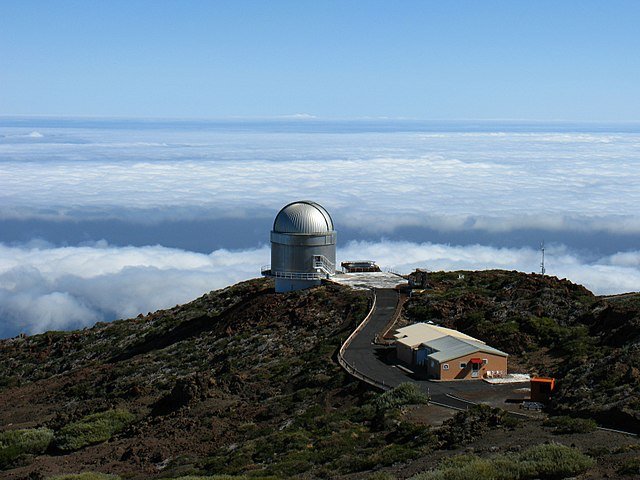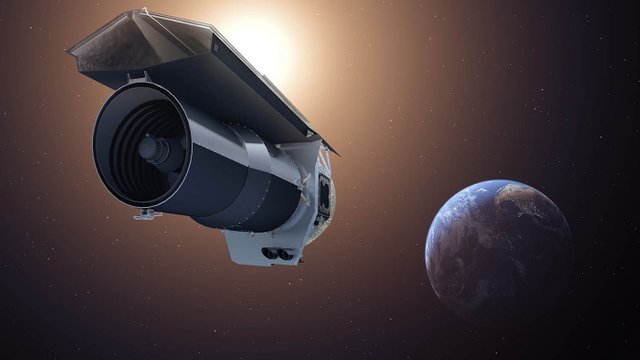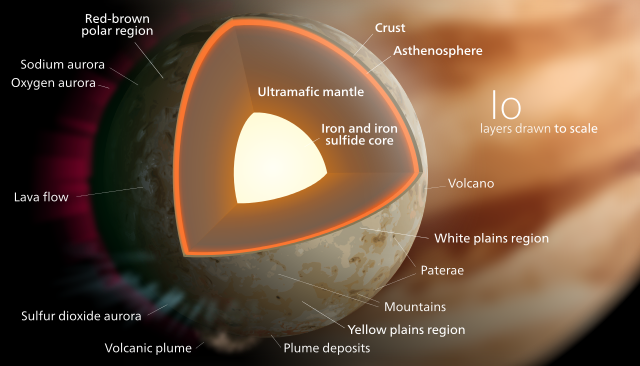What if the Earth were the size of Jupiter?
Hello, loved community after some time apart of steemit now I'm back!
I had a ton work in my new job but never mind, I'm here again and I going talk about an interesting topic
What if the Earth were the size of Jupiter?
Have you asked it?
Well, First of All, I'm going to make a brief resume after goes to the real question
More than 2000 planets outside our solar system have been discovered so far.
How do we know what the planets beyond are like?
As we know we can't see any planets outside the solar system with our telescopes from here on Earth.
The largest telescope at the moment is the one found in the Canary Islands and its lens is 10.4 meters long. Although, its range is very limited.

Wikimedia commons
CC BY-SA 3.0
If we focused that telescope on the moon and you wanted to see the objects left behind by the astronauts you wouldn't be able to see anything. for that, you would need a much larger telescope, say one with a 200-meter diameter lens.
Even the Hubble telescope can't see the objects left on the moon.
According to Discovery magazine:
If we build a stadium on the moon and focus on it with Hubble from Hubble we could only see one point. This may be very surprising for some people, especially because of the popularity of the Hubble photos we all know, for example, those of galaxies or nebulae. But you have to keep in mind that these nebulae and galaxies are billions much larger than the moon. However, there is a trick that if we can use them to see the objects on the moon, we can see their shadows from a certain perspective the shadows of the objects can be much larger than these as we all know them and it is the shadows that astronomers use to detect planets far beyond our solar system but in a different way.

NASA Photo Public Domain
To detect planets outside our solar system NASA uses Kepler, not Kepler the astronomer but the object that is in space. Technically Kepler is a spaceship because it does not need to have crew members to be called that way but at the same time, it is a satellite because it orbits a body, not the earth but rather the sun and is also a space observatory.
What do we know about the Kepler?
According to Wikipedia:
Kepler was part of NASA's Discovery program, a relatively low-cost program focused on specific scientific missions. The construction of the telescope and its commissioning was managed by NASA's Jet Propulsion Laboratory, with Ball Aerospace responsible for the development of the flight system, and the Ames Research Center responsible for both ground system development and operations since December 2009, as well as for the analysis of the scientific data.

Image credit: NASA/JPL-Caltech
Thanks to the Kepler is that we have news of the new planets being discovered basically this observatory, satellite and spacecraft focus on a portion of the sky and begins its search.
Only in that small portion since it was launched in 2009 has it confirmed the discovery of more than 2000 planets outside our solar system.
But how can the Kepler find planets or galaxies if it is not so powerful enough to specifically see a planet outside our solar system?
What it does is look for stars, as starlight is very powerful and opaque to objects around it such as planets and makes them difficult to see. what Kepler does is to look for the regularity that a body produces when passing in front of the star and between it lens of its telescope in other words, it looks for its shadow and according to this it can take out other data more like for example how far away the planet is, how long its orbit takes and what size it is.
Of the more than 2000 planets that Kepler has confirmed, only 12 are within the habitable zone. For a planet to be considered habitable it has to meet certain requirements, such as having water another of them is that it is not too close to the sun, or its star to be a lava pit or that it is too far away to be frozen.
Jupiter, for example, has clouds on top of it, then it has gaseous hydrogen, liquid hydrogen, metallic hydrogen which is a kind of liquid metal and then is theorized to have a small solid core.

Wikimedia Commons
CC BY-SA 3.0
But what would happen if the earth were the size of Jupiter, then according to what I just said the earth would be a gas giant and could not hold life since there is a limit to being a rocky planet that is more or less the mass of 10 earths.
If a planet exceeds that limit it will be a gaseous planet, but this is a very ambiguous question because size, mass, and radius are very different concepts.
But suppose that it can be done, suppose that the earth is gigantic, Jupiter has the mass of 300 lands then there would be a problem with density if you tried to recreate a solid object with such a mass you would have a much smaller radius than Jupiter and the gravity of the surface would be crushing it.
Normally Jupiter has a gravity that is 2.5 times the gravity on earth, but Jupiter is gaseous and there would be no solid surface on which to lean on this super-earth because if you had anywhere to lean, the crushing gravity would be 7 times that of the earth.
One last thing
As it took the earth billions of years to cool down, from being that solid rock with eruptions everywhere. the fact that it is much larger in mass would also mean that it would take much longer to cool down which indicates that at the moment there would be no one alive but only volcanoes and it would be hell.
Hi @jsxchemistry
We have selected your post as post of the day for our DaVinci Times. Our goal is to help the scientific community of Steemit, and even if our vote is still small we hope to grow in quickly! You will soon receive our sincere upvote! If you are interested in science follow us sto learn more about our project.
Immagine CC0 Creative Commons, si ringrazia @mrazura per il logo ITASTEM.
CLICK HERE AND VOTE FOR DAVINCI.WITNESS
Keep in mind that for organizational reasons it’s necessary to use the “steemstem” and “davinci-times” tags to be voted again.
Greetings from @davinci.witness and the itaSTEM team.